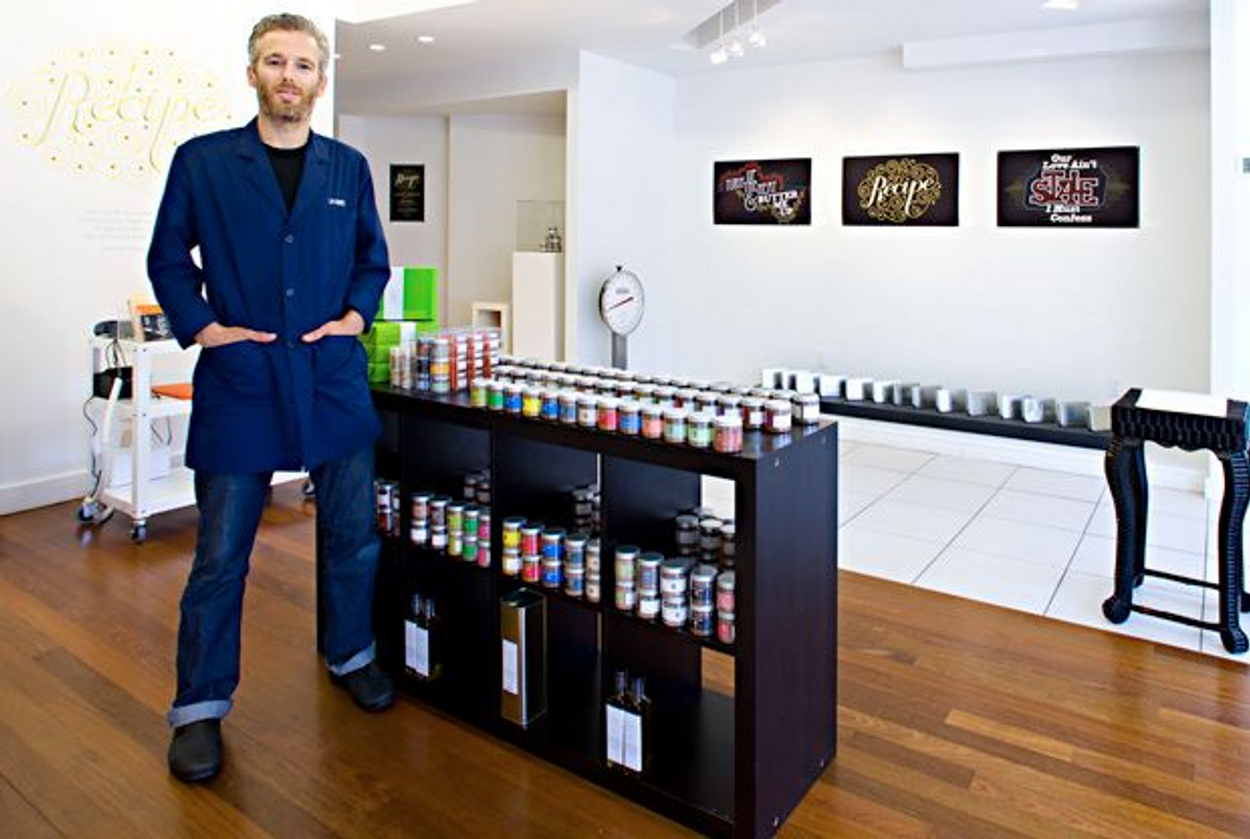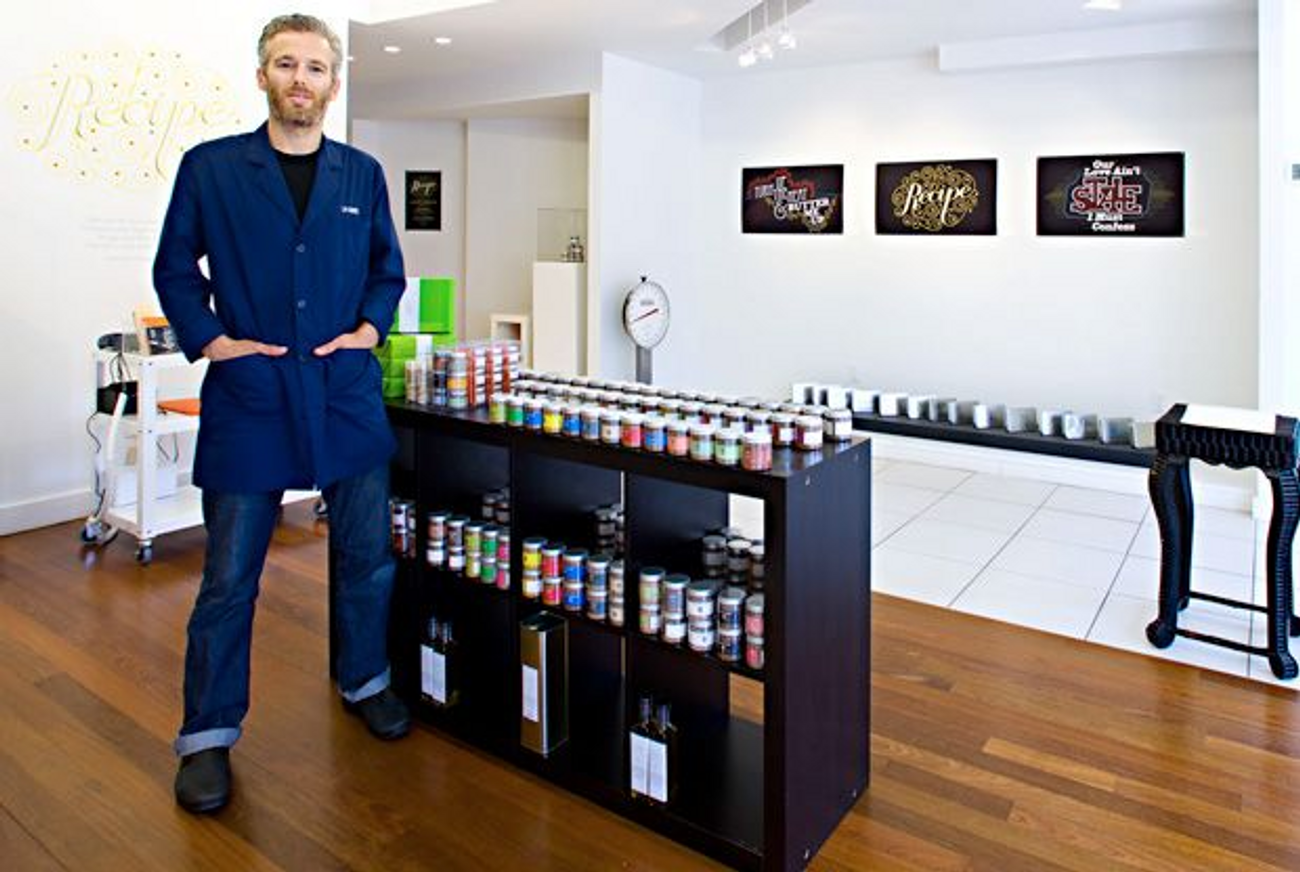Posh Spice
Lior Lev Sercarz, an Israeli-born, French-trained chef, is a top provider of rigorously sourced seasonings to high-end New York restaurants




Lior Lev Sercarz is carrying a black backpack and pulling a small wheeled suitcase as he walks through midtown Manhattan. Looking like a kindly, modern-day peddler, with striking blue eyes and a beard, the 39-year-old “spiceologist to the stars” crosses West 52nd Street. He glides down an escalator and enters the back door of Le Bernardin, Eric Ripert’s Michelin three-star restaurant. Pulling his wares, Sercarz twists and turns through the warren of corridors until he reaches the kitchen. It is 5 p.m. on a Friday. He is two hours late. No one seems to mind.
Sercarz, an Israeli transplant now based in New York, is one of the city’s experts on and distributors of spices and spice blends. As William Montagne, a sous chef, welcomes him, he jokes in French that Sercarz should have his own security passcard, because this is his sixth day at the restaurant in a week. White-coated chefs gather as the wizard pulls out jars of black garlic, mango chutney, kaffir limes, and some of his unique mixtures—he is famous for mixing his spices into potent, powdery blends, simply wrapped in recycled plastic bags. One of them asks for whole mace, a delicate part of nutmeg. Sercarz responds that he will grind it for the chef, knowing that he can save time by grinding the spice quicker and better. “I grind it to order in small batches so that I always have fresh high-quality products,” he tells me later. Another wants French lentils. They don’t discuss price. Ripert’s crew know that Sercarz’s goods are top quality and cost accordingly.
Born in Israel, Sercarz spent part of his childhood in Italy and Belgium, where his father worked as a jeweler, and the balance in his home country, on Kibbutz Dan, in northern Israel, and later near Tel Aviv. After serving in the IDF, Sercarz worked at an Israeli catering company for a few years before heading to France for a two-year culinary program at the Paul Bocuse Institute in Lyons. After that, he apprenticed with Olivier Roellinger (a three-star chef known for his use of spices) at his restaurant in Brittany, Les Maisons de Bricourts, and now at his spice shop in Paris. Then he came to New York to work as a chef at Feast and Fêtes, Daniel Boulud’s catering company. While working there, where he also helped put together cookbooks, Sercarz realized that running a restaurant was not for him. “I wanted to be part of the restaurant industry but not in one restaurant,” he says. “I felt the need to tell my own story and the best way to do it was with the spices.”
When he opened his business, called La Boîte, in 2006, Sercarz offered three blends and had one customer, Laurent Tourondel, then building his BLT restaurant chain. Now he has 41 official blends and 15 more that he makes special order for his roster of 35 clients, which includes such luminaries as Marc Forgione, Michael Solomonov of Philadelphia’s Zahav, and his old boss Daniel Boulud.
Sercarz is following in the footsteps of ancient Jewish spice traders. Jews were in Ceylon, modern-day Sri Lanka, in the second century and likely brought back spices with them to the Middle East and Europe. There are also biblical references to spices. “Spikenard and saffron, calamus and cinnamon, with all the frankincense trees, myrrh and aloes, with all the finest spices,” says a verse from the Song of Songs, in which the writer compares the spices to his love’s beauty. Sercarz invokes this history in describing his merchandise. “From day one the Bible mentioned scents in cosmetics and food, the clove and the nutmeg,” he says. “But they were reserved for the higher class, the average person didn’t have access to them.”
Sercarz combs the world for the best ingredients, revealing to nobody where his 120 different spices come from. He forbids anyone else from being present when he grinds them into his celebrated blends, like his popular Isfahan, which includes limon omani and cardamom and is good for chicken broths and rice dishes. Another, Amber, includes ancho chilies, annatto, and mace, and works well in a meat rub. At La Boîte, just a block from the Hudson River in midtown, he employs a single assistant, weighing spices before they are jarred, and boxing the spice cookies he bakes in the mornings and evenings.
Like one of his mentors, Olivier Roellinger, Sercarz travels to India, China, Indonesia, and elsewhere to procure his goods. He toasts his spices in the oven and then grinds different combinations of blends, each one offering a unique story. Take the blend he calls Pierre Poivre. It includes a mix of eight different peppers from around the world and is named for an 18th-century French horticulturist and missionary who traveled with the French East India Company to Cochin India, China, Guangzhou, and Macau. “Knowingly or unknowingly he broke the monopoly of the Dutch, British, and Portuguese in the 18th century,” Sercarz says.
Sercarz was born into a culinary culture where spices are central. “My Transylvanian grandmother married a Tunisian,” he says of his mother’s side. His father’s parents were from Germany and Belgium. Paprikash and poppy seeds met peppers and preserved lemons in his childhood kitchen. Years ago, I attended a cooking class sponsored by YIVO at which Sercarz prepared a delicious orange soup that combines flavors including cumin, figs, mint, and fresh oranges from the many cultures that shaped his tastes, North African to French.
La Boîte feels more like a gallery than a retail shop, with little more than a 3-foot Hobart scale standing on the floor. The only visible products for sale are a display of his spice combinations on one pedestal, delicate butter cookies infused with anise and coarse French sea salt on another, and, on a third, butter cookies shaped like dog bones and spiked with Sercarz’s mix of pink and Sichuan peppercorns, nutmeg, and mace, which Sercarz has flown in from Poilâne, the French bakery. There is no spice grinder in sight; three electric grinders are stored downstairs.
“There are no tricks,” he says about his spices. “I just create blends using the best possible products. I use my experience as a chef and my knowledge of baking to create spices that could be used in as many possible ways.” For Sercarz “the best” means learning to distinguish a bad product from a good one by testing the freshness, pungency, and aroma.
He opens a blend known as Sri Lanka. We take a whiff. “You haven’t tasted cinnamon until you have tasted Sri Lankan cinnamon,” he says. As we sniff, I imagine Sercarz in the 14th century, bringing Taillevent, the famous French chef, his spices—galangal, ginger, mace, great cinnamon, and more. Sercarz would not have been a chef in those days, just a Jewish peddler who brought spices back from China or India or Ceylon or just as likely bought them from another peddler who had made the journey. Back then, Sercarz would have courted the great chef and kept a few spices for his wife to cook at home for the Sabbath.
Today, Sercarz is more like Nostradamus, the 16th-century Jewish-born but converted doctor, seer, and pastry baker who, like Sercarz, knew that the best spices enhance our health and our lives.
Joan Nathan is Tablet Magazine’s food columnist and the author of 10 cookbooks including King Solomon’s Table: a Culinary Exploration of Jewish Cooking from Around the World.